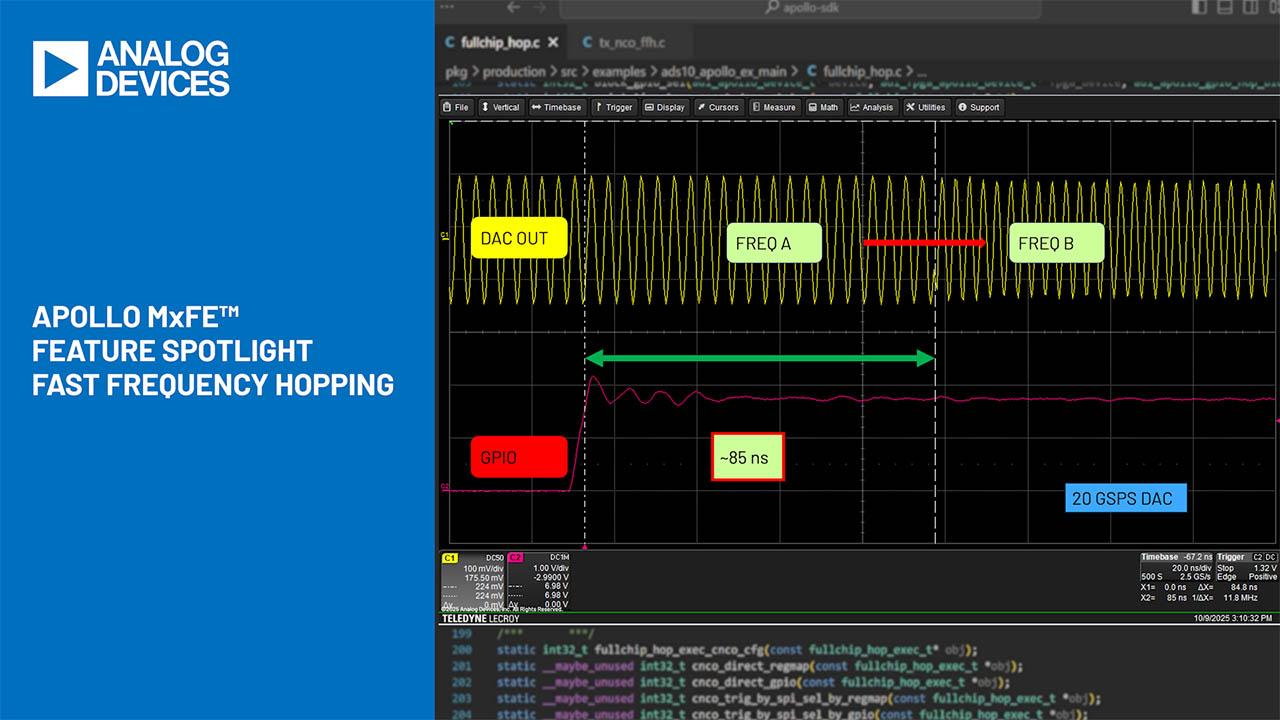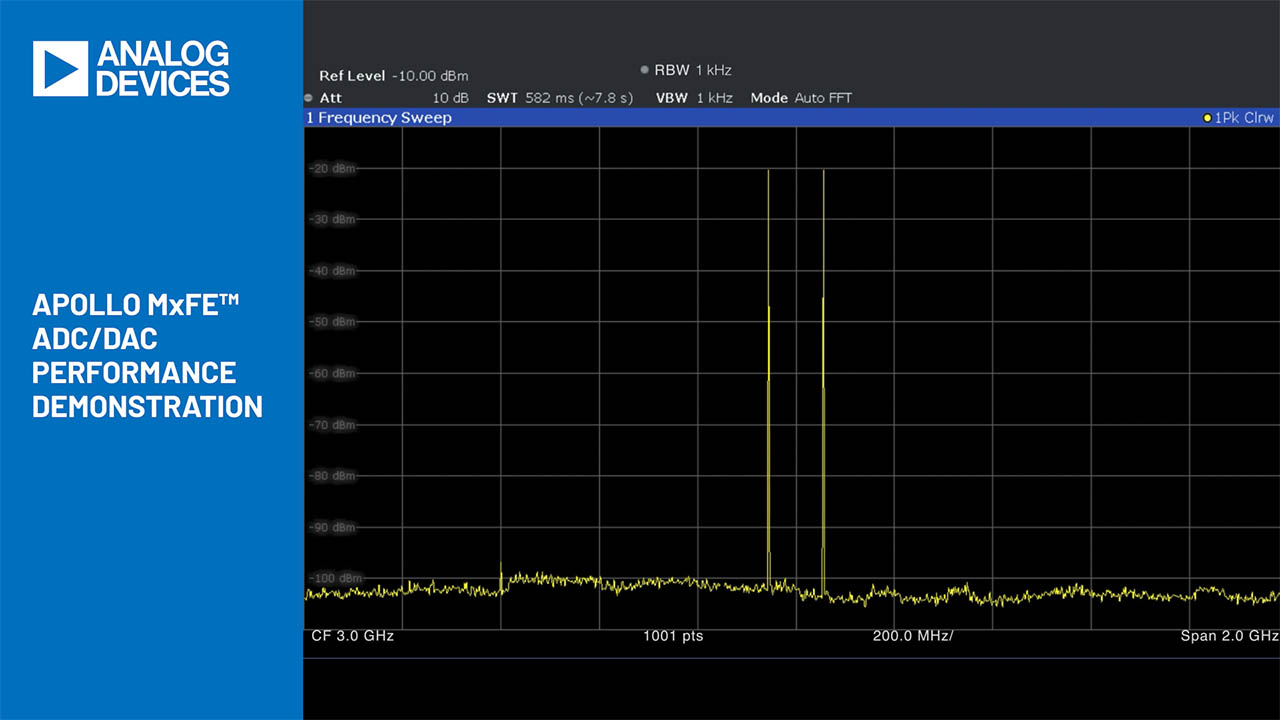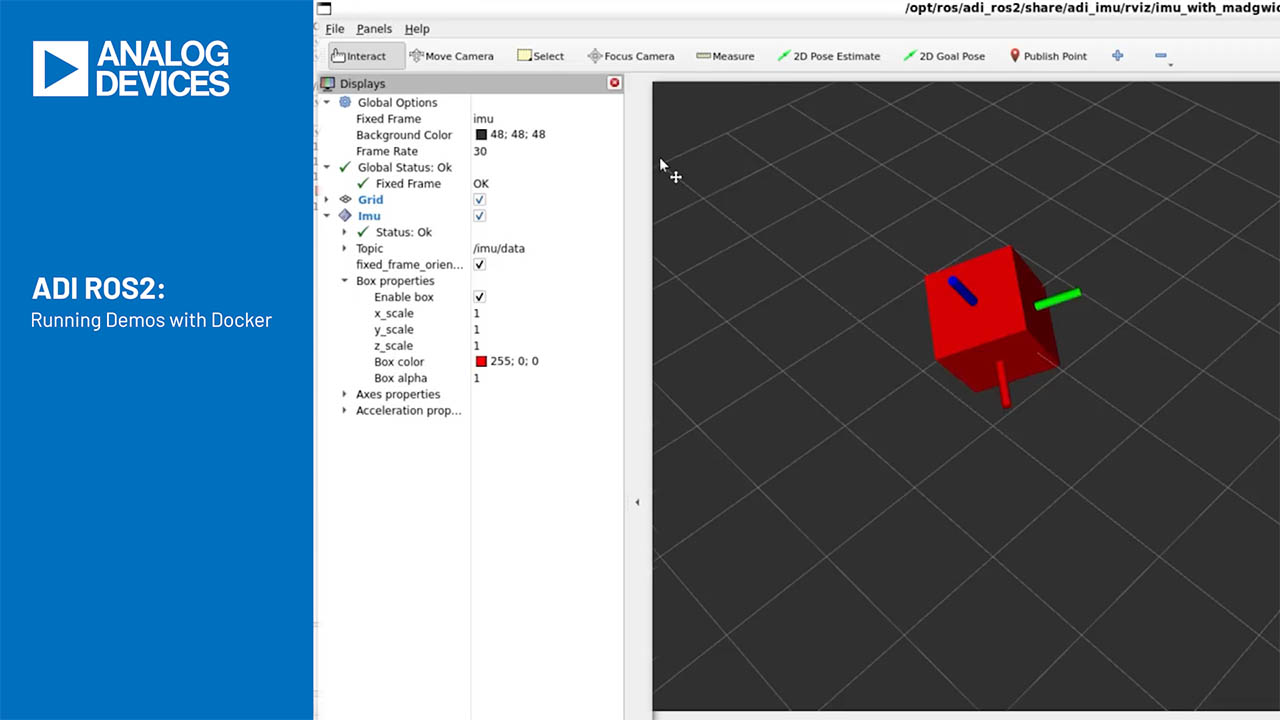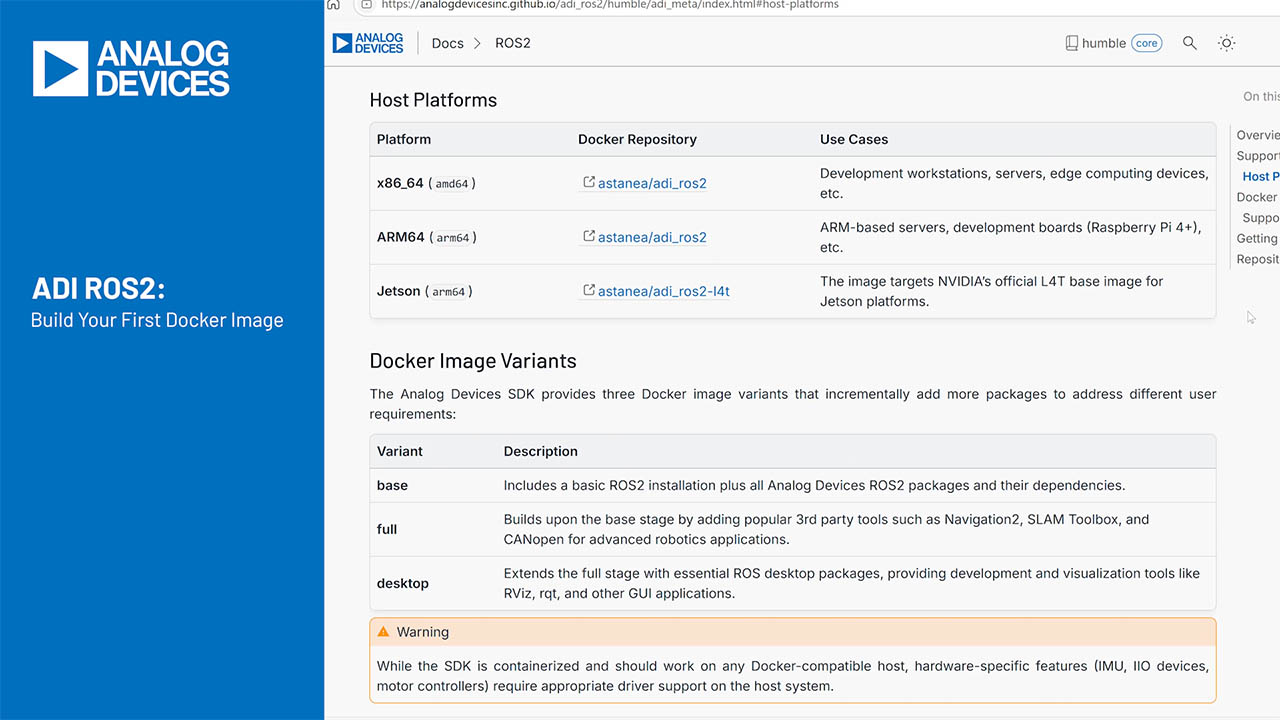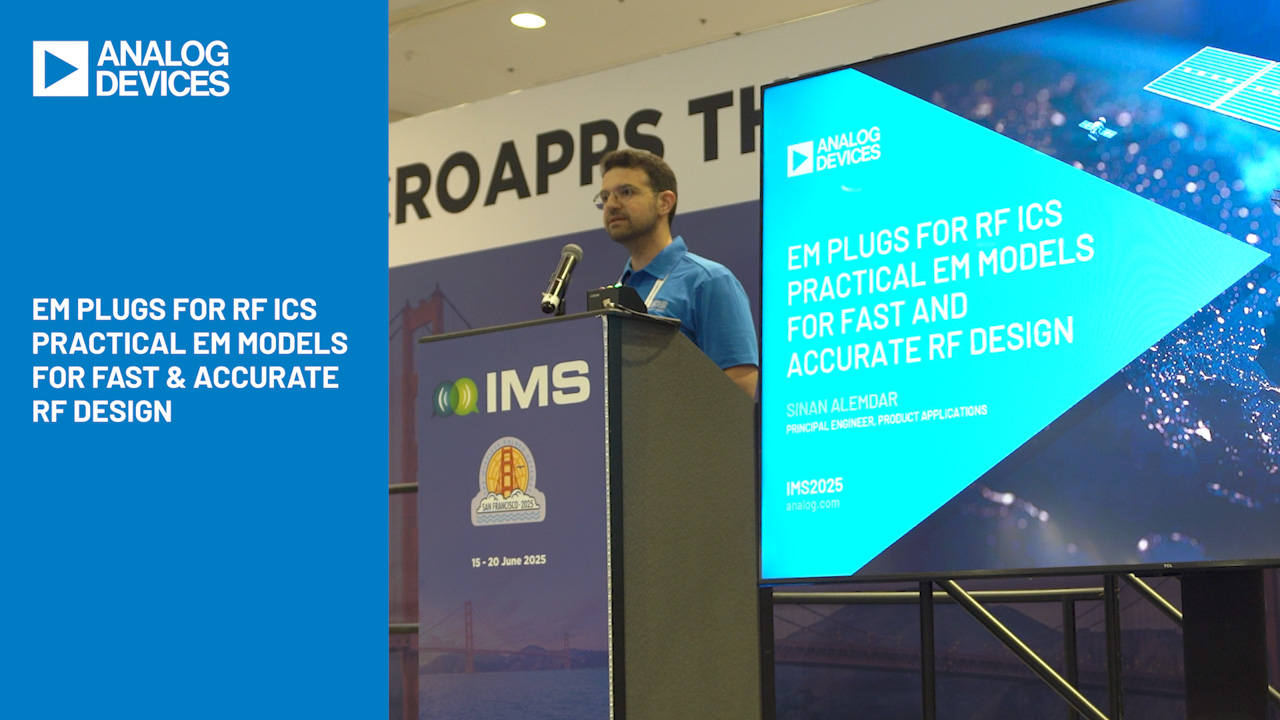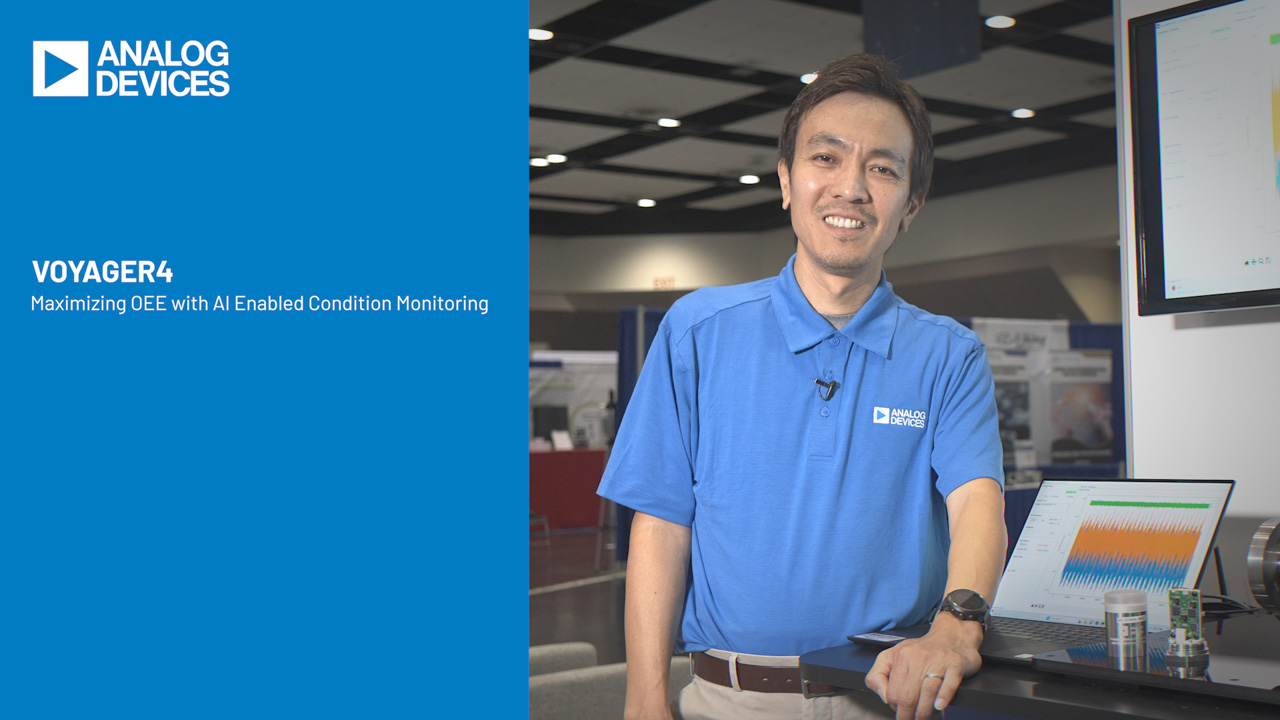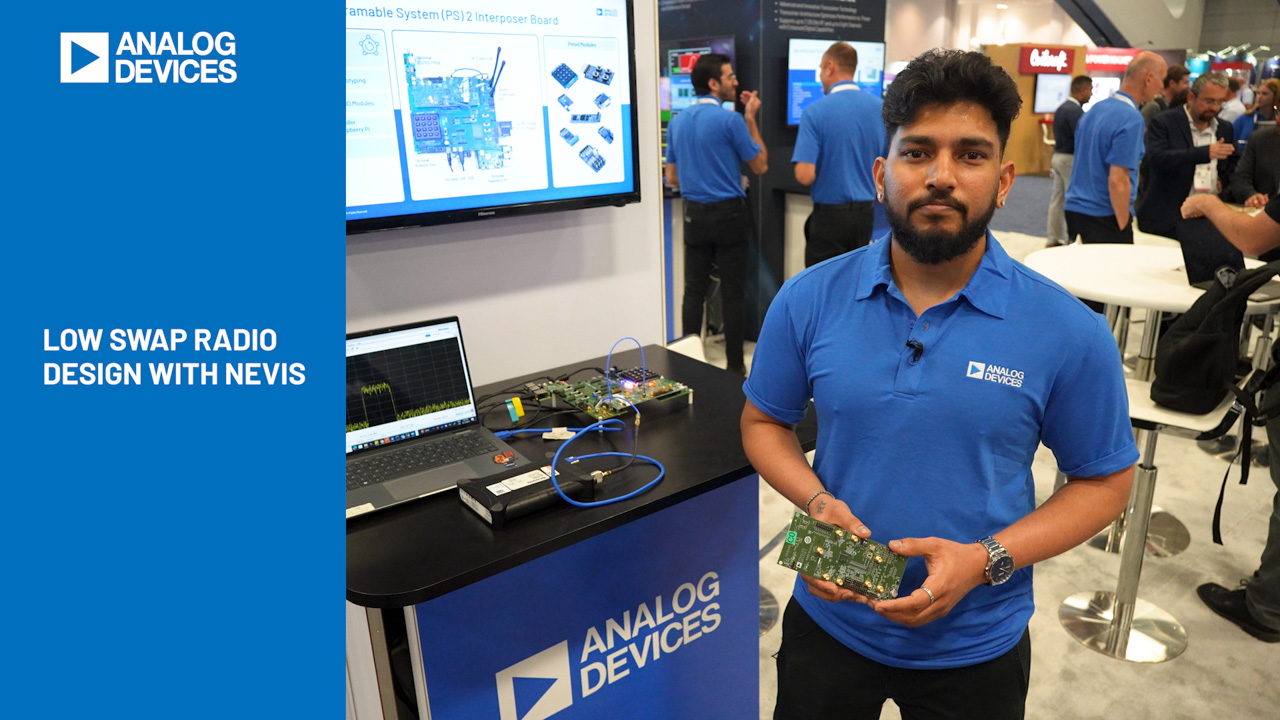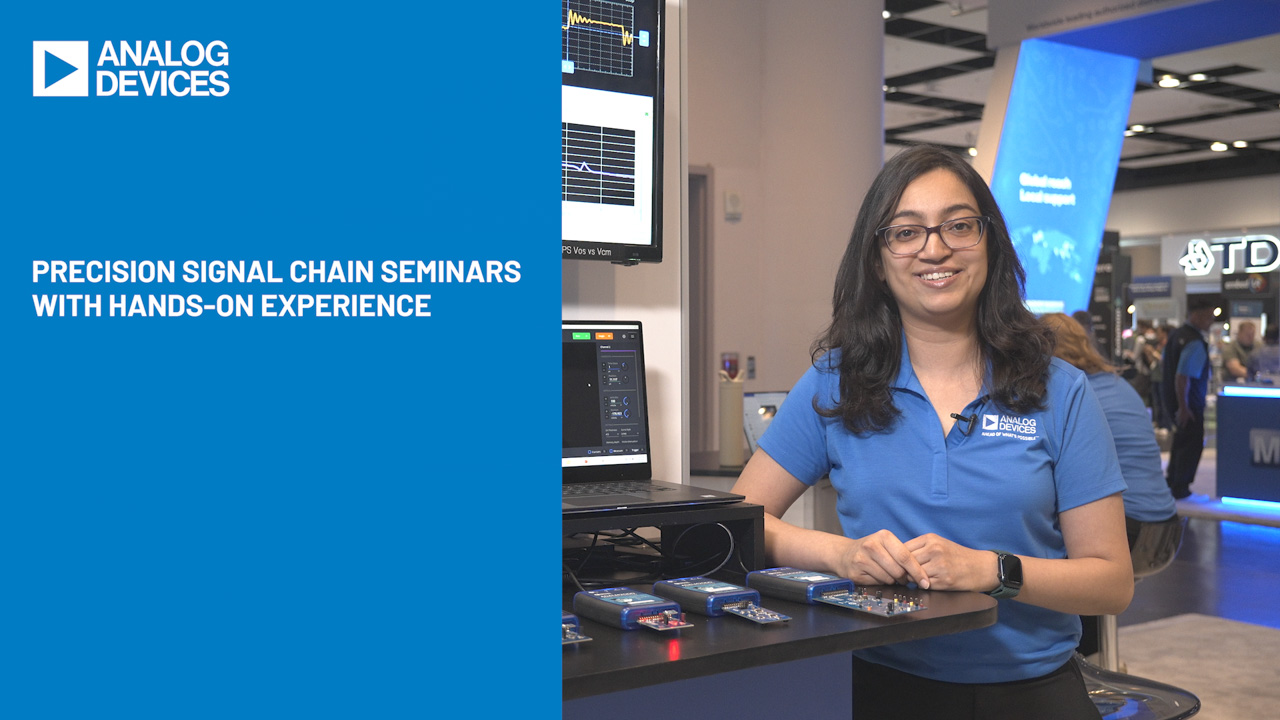要約
Differential gain and phase (DG and DP) are common video specifications. What are they? Why are they used if they cannot be seen? This application note answers these questions, and explains how these specifications are applied to other nonvideo amplifiers, ADCs, and DACs.
A similar article was published February 18, 2011 in Planet Analog.
Technology Update
In the four years since the article was written, the video world has undergone major changes. High definition (HD) in many forms has replaced encoded systems like NTSC and PAL. The information is still relevant because of the existing installed base and of new industrial and security systems where a single coax connection is convenient.
Differential phase (DP) only applies to encoded systems with a reference burst. So with most HD, there is no DP. However, differential gain (DG) was first a black-and-white TV test. It is also a good way to explore the linearity of analog amplifiers for applications other than television. Figure 1 is a low-frequency staircase with a high frequency superimposed. Placing a small high-frequency sine wave (about 2/3 to 3/4 of the system bandwidth) on top of a larger lower-frequency sine wave will have the same effect. If the pair of signals is low level and centered between the power rails (the sweet spot), the output will have the best linearity (Figure 2). As the low-frequency signal increases in amplitude, the high-frequency signal will distort first. The second and even harmonics will increase if the distortion is asymmetrical top-to-bottom. If the signal distorts evenly top and bottom, the third and odd harmonics will increase.
Introduction
Many say that video differential gain and phase (DG and DP) are not visible to the human eye. So why would anyone want to measure something that is invisible? How are DG and DP applied to amplifiers, analog-to-digital converters (ADCs), and digital-to-analog converters (DACs)? This application note will explain how one can actually "see" (measure) DG and DP and why the specifications are important.
How Can One See DG and DP?
A DG or DP video error means that a person's flesh tone will change as he or she moves from a brightly lit area to a dimly lit area. The gain change would alter the saturation or how vivid the color is, much like the chroma control on a TV. The phase will change the hue of the color (toward green or purple) like the tint control of a NTSC (North America and Japan) TV set. So while DG and DP do indeed exist, they are said to be "invisible" because the magnitude of change is usually small. Moreover, the fluctuating scene brightness masks the errors.
Why Are DG and DP Specifications Needed?
Think of how a TV program is created. Multiple camera signals are switched and sent through special-effects equipment, then recorded, played back, and edited on the way to becoming a program. The program can be distributed over long distances by microwave, fiber optics, or satellite to eventually be broadcast over the air. A cable or satellite system then brings the program into homes so viewers can enjoy it. In this process, the video may pass through hundreds of amplifiers. Each amplifier contributes a small amount of DG and DP. To be sure that the integrity of the video signal is preserved, engineers designed a very sensitive test signal. For example, a MAX4380 amplifier is specified with a low typical DG of 0.02% and DP of 0.08 degrees.
All amplifiers have some amount of nonlinear amplitude response. Negative feedback is utilized to reduce this nonlinearity. DG and DP are really specialized linearity measurements that account for frequency response. NTSC (US) and PAL (UK, Europe, and China) TV systems send the color information on a subcarrier (3.58MHz for NTSC, 4.43MHz for PAL). DG is defined as the change in amplitude of the high-frequency subcarrier when there is change in low-frequency video level or brightness. Figure 1 shows an NTSC video waveform. The 3.58MHz subcarrier is superimposed on a lower frequency luminance signal with five brightness steps. The subcarrier is drawn as single large sine waves for clarity. In fact, there are more than 200 subcarrier cycles across one horizontal line.

Figure 1. Video DG and DP.
DP is defined as the change in phase of the high-frequency subcarrier when the lower frequency video level or brightness changes in NTSC and PAL. The hue or tint of the color displayed is controlled by the phase relationship between the reference burst located in the black region of the video and the subcarrier present in the active video picture time. If the proper color is to be displayed, the phase must be accurately controlled.
Amplifiers, ADCs, and DACs have a "sweet spot" where they are most linear and meet the highest specifications or standards. This sweet spot is usually located midway between the two power rails (Figure 2), although the IC designer could place it at another point if necessary. Here the amplifier is operating with the best control over feedback and is naturally most linear. That means that, as a signal approaches the power-supply rails, the linearity is reduced. Superimposing a high-frequency sine wave on a low-frequency signal allows all of the amplifier's operating range to be explored. For example, if the application needs a 10MHz signal, an amplifier like the MAX4389 can be used by applying a 7MHz sine wave and then changing the DC bias. The sine-wave signal biased to midrange DC will have the best response. As the DC is changed to move the sine wave toward either power-supply rail, the sine-wave amplitude will change. Usually the high-frequency response is reduced as the power rail is approached and the transistor operating current is reduced. At the extreme condition the amplifier simply runs out of current, stops operating, and clipping occurs. ADCs and DACs can be checked in a similar manner.

Figure 2 Amplifier DG and DP near the power rails.
As an IC becomes more complex and is more than just a single amplifier, more DG and DP error is expected. The MAX7428 video filter and buffer is specified at typical DG 0.2% and DP of 0.2 degrees. The video path is significantly more complicated as the video passes multiplex switches, a 6-pole Sallen-Key filter, and video buffer. That Sallen-Key filter is actually three or more amplifier stages.
Conclusion
So return to the original question: why measure something that cannot be seen? The DG and DP tests were designed to detect very small errors before that error could bother a human. This ensures good video quality when the video passes through hundreds of amplifiers in succession. For amplifiers, ADCs, and DACs, the performance can be verified both at the sweet spot and near the power rails. Again this process detects very small errors, thus ensuring signal integrity with multiple stages.
Maxim's complete list of op amps is available on the website.
この記事に関して
製品
負荷検出付き、1.8V、超低電力、DirectDriveビデオフィルタアンプ
4チャネル、標準画質ビデオフィルタ
標準解像度ビデオ復元フィルタおよびバッファ
SOT23、低ノイズ、低歪み、広帯域、レール・ツー・レールオペアンプ
超低オフセット/ドリフト、低ノイズ、高精度SOT23アンプ
シャットダウン付き、1MHz、20µA、レール・ツー・レールI/Oオペアンプ
超小型、低コスト、85MHzオペアンプ、レイルトゥレイル出力およびディセーブル付
シャットダウン付き、高出力ドライブ、10MHz、10V/µs、レール・ツー・レールI/Oオペアンプ、SC70
シングル/デュアル/クワッド、広帯域、低電力、単一電源、レイルトゥレイル入出力オペアンプ
200kHz、4µA、シャットダウン内蔵、レイルトゥレイルI/Oオペアンプ
超小型、低コスト、210MHz、単一電源オペアンプ、レイルトゥレイル出力およびディセーブル付
SOT23、低ノイズ、低歪み、広帯域、レール・ツー・レールオペアンプ
デュアル、10ビット、300Msps DAC、4x/2x/1x補間フィルタおよびPLL付
デュアル、10ビット、40MHz、電流/電圧同時出力DAC
2線式シリアルインタフェース付き、不揮発性、クワッド、8ビットDAC
デュアル、10ビット、プログラム可能な、30mA大出力電流DAC
シリアルインタフェース付き、32チャネル、14ビット、電圧出力DAC
300Msps、12ビットDAC、コンプリメンタリ電圧出力付
デュアル、超低電力、10ビット、電圧出力DAC
バッファ付き、高速セトリング、オクタル(8回路)、12/10/8ビット、電圧出力DAC
低コスト、電圧出力、16ビットDAC、µMAXパッケージ
デュアル、8ビット、40Msps、3V、低電力ADC、内部リファレンスおよび多重パラレル出力付
低コスト、低電力、3線式シリアルインタフェース付き8ビットDAC、SOT23
8/4チャネル、±3 x VREFマルチレンジ入力、シリアル16ビットADC
低電力、8チャネル、12ビットシリアルADC
14ビット、4チャネル、ソフトウェアプログラマブル、マルチレンジ、同時サンプリングADC
デュアル、8ビット、100Msps、3.3V、低電力ADC、内部リファレンスおよびパラレル出力付
1Msps、µPコンパチブル、8ビットADC、1µAパワーダウン内蔵
内部リファレンスおよびパラレル出力付き、デュアル、10ビット、120Msps、3.3V、低電力ADC
10ビット、105Msps、+3.3V単電源、低電力ADC、内部リファレンス付
デュアル、96Msps、14ビット、IF/ベースバンドADC
10ビット、60Msps、3.0V、リファレンス内蔵、低電力ADC
16ビットADC、150ksps、3.3V単一電源
超低電力、45Msps、デュアル8ビットADC
デュアルSPSTスイッチ内蔵、標準画質ビデオフィルタアンプ
低コスト、6チャネルSDおよびHD/SD選択可能なビデオフィルタおよびバッファ

